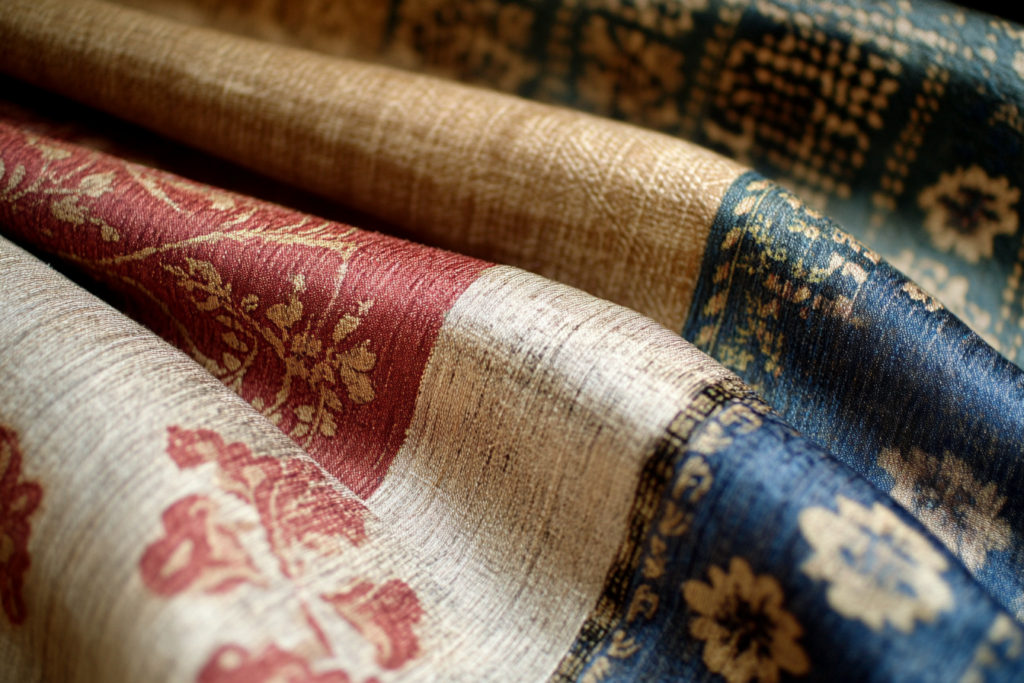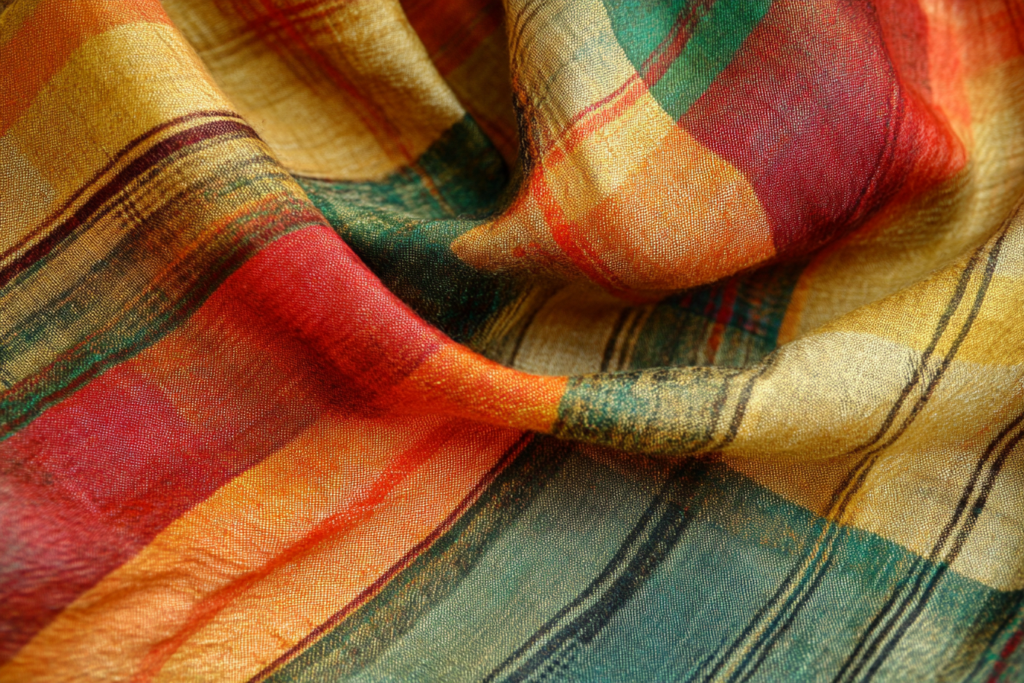Woven Fabric: The Art of Crafting Textiles with Warp and Weft Yarns
Meta Description: Woven fabric is created by weaving warp and weft yarns on a loom. Learn how this traditional method works, its types, and how woven fabrics are used in clothing and textiles.
What is Woven Fabric?
Woven fabric is a textile formed by interlacing two sets of yarns at right angles to each other: the warp and the weft. The warp yarns run lengthwise, and the weft yarns run crosswise. The weaving process is carried out on a loom, where the warp yarns are held taut, and the weft yarns are interlaced through them in specific patterns. This interlacing technique forms a stable fabric that is widely used in the textile industry.
Woven fabrics are known for their strength, durability, and ability to maintain their shape. They are used in a variety of applications, from clothing and furniture upholstery to industrial textiles.


How is Woven Fabric Made?
📌 1. Warp and Weft Yarns
- Warp yarns: These are the long, vertical yarns that are placed on the loom first. They are stretched tightly along the length of the fabric.
- Weft yarns: These are the horizontal yarns that are woven in and out through the warp yarns. The weft yarns pass over one warp yarn and under the next in a specific pattern to create the fabric.
📌 2. The Weaving Process
- The loom is used to manipulate the yarns, with the warp yarns being held under tension while the weft yarns are inserted. The process involves the following steps:
- Shedding: The loom creates an opening, or “shed,” between the warp yarns.
- Picking: The weft yarn is passed through the shed.
- Beating Up: The weft yarn is pushed into place against the rest of the fabric using a reed.
- Taking Up: The finished fabric is wound onto the cloth beam.
📌 3. Patterns and Designs
- Woven fabrics can be made in a variety of patterns, from the simplest plain weave to more complex jacquard and twill weaves. The pattern is determined by how the warp and weft yarns are interlaced.
Types of Woven Fabrics
📌 1. Plain Weave
- In a plain weave, the weft yarn passes over one warp yarn and under the next in a simple, consistent pattern. This is the most basic type of weave and is commonly used for cotton fabrics like muslin, chambray, and twill.
- Example: Canvas is made using plain weave, offering durability and strength.
📌 2. Twill Weave
- A twill weave creates a distinctive diagonal pattern, where the weft yarn passes over one or more warp yarns before going under two or more. This pattern gives the fabric a stronger texture and more drape.
- Example: Denim fabric is typically woven with a twill weave, which contributes to its durability and characteristic diagonal lines.
📌 3. Satin Weave
- In a satin weave, the weft yarns are floated over several warp yarns before going under one. This creates a smooth surface with a characteristic shiny finish. Satin fabrics have a luxurious feel and are often used for evening wear.
- Example: Satin fabric used in bridal gowns and luxury evening dresses.
📌 4. Jacquard Weave
- A jacquard weave involves intricate patterns that are woven directly into the fabric rather than printed on the surface. It requires special jacquard looms that allow for complex designs.
- Example: Brocade and damask fabrics feature jacquard patterns with rich designs and textures.
📌 5. Basket Weave
- The basket weave is a variation of the plain weave, where two or more warp yarns are interlaced with two or more weft yarns. This creates a fabric with a more open and loose texture.
- Example: Oxford cloth is commonly woven in a basket weave pattern, making it lightweight and breathable.
Advantages of Woven Fabrics
1. Strength and Durability
- Woven fabrics are generally stronger and more durable than knitted fabrics. The tight interlacing of the warp and weft yarns makes the fabric less likely to stretch or lose its shape over time.
2. Shape Retention
- Woven fabrics maintain their shape better than knits because they do not stretch as easily. This makes them ideal for structured garments like blazers, skirts, and tailored suits.
3. Variety of Textures and Patterns
- Woven fabrics can have a variety of textures and patterns, making them versatile for designers to create different looks. The weaving technique can be used to produce smooth, textured, or embossed fabrics, depending on the design.
4. Breathability
- Because woven fabrics often have a more open structure, they are often breathable, making them ideal for warm-weather garments such as summer shirts, blouses, and dresses.
Uses of Woven Fabrics
📌 Apparel
- Woven fabrics are commonly used in the production of shirts, skirts, jackets, pants, and dresses. Their ability to retain structure makes them ideal for tailored garments.
📌 Home Textiles
- Curtains, upholstery, tablecloths, and bed linens are often made from woven fabrics due to their durability and versatility in home applications.
📌 Industrial Textiles
- Woven fabrics are also used in industrial textiles, such as sails, canvas tents, and automotive upholstery, due to their strength and resistance to wear.
Illustration of Woven Fabric
Here’s an illustration showing the basic structure of woven fabric, with the interlacing of warp and weft yarns.

Conclusion: The Timeless Craft of Woven Fabrics
Woven fabrics have been a staple in textile production for centuries, providing both strength and versatility in a wide range of applications. From the basic plain weave to the intricate jacquard patterns, woven fabrics offer endless possibilities for garment design and fabric construction. Whether used for everyday clothing, luxurious evening wear, or durable industrial textiles, woven fabrics are an essential part of the textile world.



